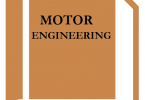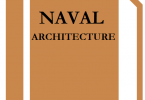- Which of the following statements is true?
- The installation of an IMO approved incinerator is mandatory on all ships.
- The installation of an incinerator is mandatory on all ships above 400 GRT.
- The installation of an incinerator is not a mandatory requirement.
- The installation of incinerators is mandatory only for dry ships
ANS.: A
- The purpose of inert gas systems onboard tank vessels is to __________.
- allow sufficient oxygen in the tank to sustain life
- prevent outside air from entering the tank
- provide increase in cargo discharge pressure
- comply with double hull pollution prevention regulations
ANS.: B
- In reference to accidental oil pollution, the most critical time during bunkering is when ________
- you first start to receive fuel
- hoses are being blown down
- final topping off is occurring
- hoses are being disconnected
ANS.: C
- An inert gas system installed on a tanker is designed to __________.
- aid in the stripping and cleaning of cargo tanks
- increase the rate of discharge of cargo
- force toxic and explosive fumes from a cargo tank to vent to the outside atmosphere
- lower the oxygen levels inside cargo tanks, making explosion nearly impossible
ANS.: D
- Your ship is sinking rapidly. A container containing an inflatable liferaft has bobbed to the surface upon functioning of the hydrostatic release. Which action should you take?
- Cut the painter line so it will not pull the liferaft container down.
- Swim away from the container so you will not be in danger as it goes down.
- Take no action because the painter will cause the liferaft to inflate and open the container.
- Manually open the container and inflate the liferaft with the hand pump.
ANS.: C
- The atmosphere in a tank is too lean if it is __________.
- incapable of supporting combustion because the hydrocarbon content is below the LFL (Lower Flammable Limit)
- capable of supporting combustion because the hydrocarbon content is above the UFL (Upper Flammable Limit)
- capable of supporting a fire once started
- not safe for ballasting
ANS.: A
- Inflatable liferafts are less manoeuverable than lifeboats due to their __________.
- shape
- shallow draft
- large sail area
- All of the above
ANS.: D
- What is the generally accepted method of determining whether the atmosphere within a cargo tank is explosive, too rich, or too lean to support combustion?
- Use the open flame test on a small sample that has been taken from the tank.
- Send a gas sample ashore for laboratory analysis.
- Enter the tank with an oxygen analyzer.
- Use an explosimeter
ANS.: D
- Before using a fixed CO2 system to fight an engine room fire, you must __________.
- secure the engine room ventilation
- secure the machinery in the engine room
- evacuate all engine room personnel
- All of the above
ANS.: D
- You are fighting a fire in the electrical switchboard in the engine room. You should secure the power, then__________.
- use a portable foam extinguisher
- use a low-velocity fog adapter with the fire hose
- use a portable CO2 extinguisher
- determine the cause of the fire
ANS.: C
- The minimum concentration of a vapor in air which can form an explosive mixture is called the__________.
- auto-ignition point
- flash point
- lower explosive limit (LEL)
- threshold limit value (TLV)
ANS.: C
- The deck water seal of the inert gas system __________.
- cools the inert gas and prevents soot from entering the cargo tanks
- acts as an emergency system shutdown when the inlet pressures exceed the safe working pressure in the hazardous zone
- prevents the backflow of hydrocarbon gasses into nonhazardous areas
- relieves sudden large overpressures in the system
ANS.: C
- The explosive range of petroleum vapors mixed with air is __________.
- 0% to 1%
- 1% to 10%
- 10% to 15%
- 12% to 20%
ANS.: B
- Fuel oil tank vents are fitted with a screen which will stop __________.
- oil from flowing out of the tank vent
- air from entering the tank vent
- vapors from leaving the tank vent
- flames on deck from entering the tank vent
ANS.: D
- Personnel who are moving or handling material aboard ship should NOT follow which of the listed practices?
- Signaling that all personnel are clear before lifting or lowering material.
- Examining material for sharp edges or protruding points before handling.
- Closing, tagging, or securing valves that permit entrance of steam, water, or air into a fitting or other equipment.
- Throwing materials from high places to the deck
ANS.: D
- Which of the following statements is true?
- Ballast water exchange at mid ocean eliminates completely the risks associated with introduction of non-native organisms and pathogens in alien habitats.
- In the flow through method, the water pumped through a tank should be at least 3 times the tank volume.
- Over pressurization of a tank cannot take place during the flow through method.
- Air pipes on ballast tanks are designed for continuous overflow.
ANS.: B
- The most common cause of engine room fires is:
- Spontaneous combustion of oily rags
- Back fire of boilers
- Ignition sources coming in contact with stored fuel /lubes
- Oil leakage coming in contact with hot exposed surfaces
ANS.: D
- A fuel tank on a barge has been certified by a marine chemist as being “Safe for Men” and “Safe for fire”. This condition may change if:
- the ambient temperature changes
- a product leaks into the certified tank
- muck, sludge, or scale in the tank give off additional vapors
- all of the above
ANS.: D
- As per MARPOL annex-1, the instantaneous rate of discharge of oil content means:
- The rate of discharge of oil-water mixture in litres per hour at any instant divided by the speed of the ship in knots at the same instant
- The rate of discharge of oil in litres per hour at any instant divided by the speed of the ship in knots at the same instant
- The average rate of discharge of oil-water mixture in litres per hour divided by the average speed of the ship in knots
- The average rate of discharge of oil mixture in litres per hour divided by the average speed of the ship in knots
ANS.: B
- Which of the following statements about LRIT is False?
- Regulation on LRIT is included in Chapter V of SOLAS
- LRIT has longer range than AIS
- LRIT, like AIS, is a broadcast system that transmits information about ship’s identity, location date and time of position to all in range
- LRIT and AIS should not have any interface
ANS.: C





